Anticancer and Antiphytopathogenic Activity of Fluorinated Isatins and Their Water-Soluble Hydrazone Derivatives
Abstract
:1. Introduction
2. Results and Discussion
2.1. Chemistry
2.1.1. Synthesis of Diversely Fluorinated 1-benzylisatins
2.1.2. X-ray Study
2.2. Biological Studies
2.2.1. Anticancer Activity
Cytotoxicity of Test Compounds
Apoptosis
Mitochondrial Membrane Potential
Reactive Oxygen Species Production
Anticoagulant and Antiaggregation Activity Studies
2.2.2. Evaluation of Antiphytopathogenic Activity of Water-Soluble Hydrazones
Antibacterial Activity
Antifungal Activity
3. Materials and Methods
3.1. Chemistry
3.2. Biological Studies
3.2.1. Anticancer Activity
Cell Lines and Their Cultivation
Determination of Cell Viability
Apoptosis
Mitochondrial Membrane Potential
ROS
Anticoagulant and Antiaggregation Activities Study
3.2.2. Antiphytopathogenic Activity
3.2.3. Statistical Analysis
4. Conclusions
Supplementary Materials
Author Contributions
Funding
Institutional Review Board Statement
Informed Consent Statement
Data Availability Statement
Acknowledgments
Conflicts of Interest
References
- Zhang, S.; Huang, D.; Wu, J.; Wang, Z. Decade Advance of Isatin in Three-component Reactions. Asian J. Org. Chem. 2023, 12, e202200591. [Google Scholar] [CrossRef]
- Pradeep, S.D.; Mohanan, P.V. Advancements in Schiff Bases of 1H-Indole-2,3-dione: A Versatile Heterocyclic Compound in Pharmacological Field. Mini-Rev. Org. Chem. 2023, 20, 45–54. [Google Scholar] [CrossRef]
- Efremov, A.M.; Beznos, O.V.; Eremeev, R.O.; Chesnokova, N.B.; Milaeva, E.R.; Shevtsova, E.F.; Lozinskaya, N.A. Microwave-Assisted Synthesis of 3-Hydroxy-2-oxindoles and Pilot Evaluation of Their Antiglaucomic Activity. Int. J. Mol. Sci. 2023, 24, 5101. [Google Scholar] [CrossRef]
- Nath, R.; Pathania, S.; Grover, G.; Akhtar, M. Isatin containing heterocycles for different biological activities: Analysis of structure activity relationship. J. Mol. Struct. 2020, 1222, 128900. [Google Scholar] [CrossRef]
- Gupta, A.K.; Tulsyan, S.; Bharadwaj, M.; Mehrotra, R. Systematic Review on Cytotoxic and Anticancer Potential of N-Substituted Isatins as Novel Class of Compounds Useful in Multidrug-Resistant Cancer Therapy: In Silico and In Vitro Analysis. Top. Curr. Chem. 2019, 377, 15. [Google Scholar] [CrossRef] [PubMed]
- Mushtaq, A.; Azam, U.; Mehreen, S.; Naseer, M.M. Synthetic α-glucosidase inhibitors as promising anti-diabetic agents: Recent developments and future challenges. Eur. J. Med. Chem. 2023, 249, 115119. [Google Scholar] [CrossRef] [PubMed]
- Cheke, R.S.; Firke, S.D.; Patila, R.R.; Bari, S.B. Isatin: New hope against convulsion. Cent. Nerv. Syst. Agents Med. Chem. 2018, 18, 76–101. [Google Scholar] [CrossRef]
- Saini, T.; Kumar, S.; Narasimhan, B. Central nervous system activities of Indole derivatives: An overview. Cent. Nerv. Syst. Agents Med. Chem. 2015, 16, 19–28. [Google Scholar] [CrossRef]
- Medvedev, A.; Igosheva, N.; Crumeyrolle-Arias, M.; Glover, V. Isatin: Role in stress and anxiety. Stress 2005, 8, 175–183. [Google Scholar] [CrossRef]
- Zhang, M.Z.; Chen, Q.; Yang, G.F. A review on recent developments of indole-containing antiviral agents. Eur. J. Med. Chem. 2015, 89, 421–441. [Google Scholar] [CrossRef]
- Bharathi Dileepan, A.G.; Daniel Prakash, T.; Ganesh Kumar, A.; Shameela Rajam, P.; Violet Dhayabaran, V.; Rajaram, R. Isatin based macrocyclic Schiff base ligands as novel candidates for antimicrobial and antioxidant drug design: In vitro DNA binding and biological studies. J. Photochem. Photobiol. B Biol. 2018, 183, 191–200. [Google Scholar] [CrossRef] [PubMed]
- Xu, Z.; Zhang, S.; Gao, C.; Fan, J.; Zhao, F.; Lv, Z.S.; Feng, L.S. Isatin hybrids and their anti-tuberculosis activity. Chin. Chem. Lett. 2017, 28, 159–167. [Google Scholar] [CrossRef]
- Raj, R.; Gut, J.; Rosenthal, P.J.; Kumar, V. 1H-1,2,3-triazole-tethered isatin-7-chloroquinoline and 3-hydroxy-indole-7-chloroquinoline conjugates: Synthesis and antimalarial evaluation. Bioorg. Med. Chem. Lett. 2014, 24, 756–759. [Google Scholar] [CrossRef] [PubMed]
- Rodríguez-Argüelles, M.C.; Cao, R.; García-Deibe, A.M.; Pelizzi, C.; Sanmartín-Matalobos, J.; Zani, F. Antibacterial and antifungal activity of metal(II) complexes of acylhydrazones of 3-isatin and 3-(N-methyl)isatin. Polyhedron 2009, 28, 2187–2195. [Google Scholar] [CrossRef]
- Guo, H. Isatin derivatives and their anti-bacterial activities. Eur. J. Med. Chem. 2019, 164, 678–688. [Google Scholar] [CrossRef]
- Ferraz de Paiva, R.E.; Vieira, E.G.; Rodrigues da Silva, D.; Wegermann, C.A.; Costa Ferreira, A.M. Anticancer Compounds Based on Isatin-Derivatives: Strategies to Ameliorate Selectivity and Efficiency. Front. Mol. Biosci. 2021, 7, 627272. [Google Scholar] [CrossRef]
- Rizzo, M.; Porta, C. Sunitinib in the treatment of renal cell carcinoma: An update on recent evidence. Ther. Adv. Urol. 2017, 9, 195–207. [Google Scholar] [CrossRef]
- Nadagouda, M.; Vijayasarathy, P.; Sin, A.; Nam, H.; Khan, S.; Parambath, J.B.M.; Mohamed, A.; Han, C. Antimicrobial activity of quaternary ammonium salts: Structure-activity relationship. Med. Chem. Res. 2022, 31, 1663–1678. [Google Scholar] [CrossRef]
- Dan, W.; Gao, J.; Qi, X.; Wang, J.; Dai, J. Antibacterial quaternary ammonium agents: Chemical diversity and biological mechanism. Eur. J. Med. Chem. 2022, 243, 114765. [Google Scholar] [CrossRef]
- Morrison, K.R.; Allen, R.A.; Minbiole, K.P.C.; Wuest, W.M. More QACs, more questions: Recent advances in structure activity relationships and hurdles in understanding resistance mechanisms. Tetrahedron Lett. 2019, 60, 150935. [Google Scholar] [CrossRef]
- Vereshchagin, A.N.; Frolov, N.A.; Egorova, K.S.; Seitkalieva, M.M.; Ananikov, V.P. Quaternary Ammonium Compounds (QACs) and Ionic Liquids (ILs) as Biocides: From Simple Antiseptics to Tunable Antimicrobials. Int. J. Mol. Sci. 2021, 22, 6793. [Google Scholar] [CrossRef] [PubMed]
- Sharma, V.D.; Aifuwa, E.O.; Heiney, P.A.; Ilies, M.A. Interfacial engineering of pyridinium gemini surfactants for the generation of synthetic transfection systems. Biomaterials 2013, 34, 6906–6921. [Google Scholar] [CrossRef] [PubMed]
- Pashirova, T.N.; Shaihutdinova, Z.M.; Vandyukov, A.E.; Voloshina, A.D.; Samorodov, A.V.; Pavlov, V.N.; Souto, E.B.; Mironov, V.F.; Bogdanov, A.V. Synthesis and structure-activity-toxicity relationships of DABCO containing ammonium amphiphiles based on natural isatin scaffold. J. Mol. Liq. 2022, 365, 120217. [Google Scholar] [CrossRef]
- Chugunova, E.; Samsonov, V.; Gerasimova, T.; Rybalova, T.; Bagryanskaya, I. Synthesis and some properties of 2H-benzimidazole 1,3-dioxides. Tetrahedron 2015, 71, 7233–7244. [Google Scholar] [CrossRef]
- Bogdanov, A.; Tsivileva, O.; Voloshina, A.; Lyubina, A.; Amerhanova, S.; Burtceva, E.; Bukharov, S.; Samorodov, A.; Pavlov, V. Synthesis and diverse biological activity profile of triethyl-ammonium isatin-3-hydrazones. ADMET DMPK 2022, 10, 163–179. [Google Scholar] [CrossRef]
- Bogdanov, A.V.; Zaripova, I.F.; Voloshina, A.D.; Sapunova, A.S.; Kulik, N.V.; Tsivunina, I.V.; Dobrynin, A.B.; Mironov, V.F. Isatin derivatives bearing a fluorine atom. Part 1: Synthesis, hemotoxicity and antimicrobial activity evaluation of fluoro-benzylated water-soluble pyridinium isatin-3-acylhydrazones. J. Fluor. Chem. 2019, 227, 109345. [Google Scholar] [CrossRef]
- Chugunova, E.A.; Akylbekov, N.I.; Appazov, N.O.; Makhrus, E.M.; Burilov, A.R. Synthesis of the First Tertiary Ammonium Derivative of 6-Chloro-5-nitrobenzofuroxan. Russ. J. Org. Chem. 2016, 52, 920–921. [Google Scholar] [CrossRef]
- Zhou, Y.; Wang, J.; Gu, Z.; Wang, S.; Zhu, W.; Acena, J.L.; Soloshonok, V.A.; Izawa, K.; Liu, H. Next generation of fluorine-containing pharmaceuticals, compounds currently in phase II−III clinical trials of major pharmaceutical companies: New structural trends and therapeutic areas. Chem. Rev. 2016, 116, 422–518. [Google Scholar] [CrossRef]
- Gillis, E.; Eastman, K.J.; Hill, M.D.; Donnelly, D.J.; Meanwell, N.A. Applications of fluorine in medicinal chemistry. J. Med. Chem. 2015, 58, 8315–8359. [Google Scholar] [CrossRef]
- Haemmerle, M.; Stone, R.L.; Menter, D.G.; Afshar-Kharghan, V.; Sood, A.K. The Platelet Lifeline to Cancer: Challenges and Opportunities. Cancer Cell 2018, 33, 965–983. [Google Scholar] [CrossRef]
- Morris, K.; Schnoor, B.; Papa, A.L. Platelet cancer cell interplay as a new therapeutic target. Biochim. Biophys. Acta Rev. Cancer 2022, 1877, 188770. [Google Scholar] [CrossRef]
- Suzuki-Inoue, K. Platelets and cancer-associated thrombosis: Focusing on the platelet activation receptor CLEC-2 and podoplanin. Blood 2019, 134, 1912–1918. [Google Scholar] [CrossRef] [PubMed]
- Tao, D.L.; Tassi Yunga, S.; Williams, C.D.; McCarty, O.J.T. Aspirin and antiplatelet treatments in cancer. Blood 2021, 137, 3201–3211. [Google Scholar] [CrossRef] [PubMed]
- Xu, X.R.; Yousef, G.M.; Ni, H. Cancer and platelet crosstalk: Opportunities and challenges for aspirin and other antiplatelet agents. Blood 2018, 131, 1777–1789. [Google Scholar] [CrossRef]
- Downer, M.; Allard, C.; Preston, M.; Gaziano, J.M.; Stampfer, M.J.; Mucci, L.A.; Batista, J.L. Regular aspirin use and the risk of lethal prostate cancer in the Physicians Health Study. Eur. Urol. 2017, 72, 821–827. [Google Scholar] [CrossRef]
- Chen, W.Y.; Ballman, K.V.; Winer, E.P.; Openshaw, T.H.; Hahn, O.M.; Briccetti, F.M.; Johnson Irvin, W.; Pohlmann, P.R.; Carey, L.A.; Partridge, A.H.; et al. A randomised Phase III double-blinded placebo-controlled trial of aspirin as adjuvant therapy for breast cancer (A011502). J. Clin. Oncol. 2022, 40, 360922. [Google Scholar] [CrossRef]
- Jafa, E.; Nisha, Y.; Kate, V.; Kayal, S.; Ganesh, R.N.; Sunitha, V.C.; Ganesan, P.; Penumadu, P.; Dubashi, B. Comparison of efficacy of aspirin plus EOX vs. EOX alone in patients with locally advanced and metastatic gastric cancer: A randomised clinical trial. J. Gastrointest. Cancer 2022, 54, 642–650. [Google Scholar] [CrossRef]
- Pandey, V.K.; Dwivedi, A.; Pandey, O.P.; Sengupta, S.K. Organophosphorus Derivatives Containing Isatin-3-hydrazones as Chemotherapeutants against Fungal Pathogens of Sugarcane. J. Agric. Food Chem. 2008, 56, 10779. [Google Scholar] [CrossRef]
- Zampirolli, L.S.; de Lemos, M.J.; Goncalves, V.T.; de Souza, M.A.A.; de Souza, S.R.; Rumjanek, V.M.; DaCosta, J.B.N. Synthesis, characterization, and biological activity of a new class of dialkylphosphorylhydrazone derivatives of isatin. Quim. Nova 2014, 37, 989. [Google Scholar] [CrossRef]
- Jothi Nayaki, S.; Ramya, R.; Srividhya, S.; Kiruthika, J.; Ramya, K.; Karthiga, S.; Arunachalam, M.; Kavitha, D. Antibacterial potentials of pillar[5]arene, pillar[4]arene[1]quinone derivative and their isatin inclusion complexes. Supramol. Chem. 2021, 33, 701–708. [Google Scholar] [CrossRef]
- Abd-El-Khair, H.; Abdel-Gaied, T.G.; Mikhail, M.S.; Abdel-Alim, A.I.; El-Nasr, H.I.S. Biological control of Pectobacterium carotovorum subsp. carotovorum, the causal agent of bacterial soft rot in vegetables, in vitro and in vivo tests. Bull. Natl. Res. Cent. 2021, 45, 37. [Google Scholar] [CrossRef]
- Huang, X.; Ren, J.; Li, P.; Feng, S.; Dong, P.; Ren, M. Potential of microbial endophytes to enhance the resistance to postharvest diseases of fruit and vegetables. J. Sci. Food Agric. 2021, 101, 1744–1757. [Google Scholar] [CrossRef] [PubMed]
- Ragasova, L.; Penazova, E.; Gazdik, F.; Pecenka, J.; Cechova, J.; Pokluda, R.; Baranek, M.; Grzebelus, D.; Eichmeier, A. The Change of Bacterial Spectrum after Storage of X. campestris pv. campestris Inoculated Cabbage Heads (Brassica oleracea var. capitata L.). Agronomy 2020, 10, 443. [Google Scholar] [CrossRef]
- Erdrich, S.H.; Sharma, V.; Schurr, U.; Arsova, B.; Frunzke, J. Isolation of Novel Xanthomonas Phages Infecting the Plant Pathogens X. translucens and X. campestris. Viruses 2022, 14, 1449. [Google Scholar] [CrossRef]
- Ray, M.; Ray, A.; Dash, S.; Mishra, A.; Achary, K.G.; Nayak, S.; Singh, S. Fungal disease detection in plants: Traditional assays, novel diagnostic techniques and biosensors. Biosens. Bioelectron. 2017, 87, 708–723. [Google Scholar] [CrossRef]
- Wang, T.; Gao, C.; Cheng, Y.; Li, Z.; Chen, J.; Guo, L.; Xu, J. Molecular Diagnostics and Detection of Oomycetes on Fiber Crops. Plants 2020, 9, 769. [Google Scholar] [CrossRef]
- Wang, L.; Wang, N.; Yu, J.; Wu, J.; Liu, H.; Lin, K.; Zhang, Y. Identification of Pathogens Causing Alfalfa Fusarium Root Rot in Inner Mongolia, China. Agronomy 2023, 13, 456. [Google Scholar] [CrossRef]
- Alabugin, I.V.; Manoharan, M.; Peabody, S.; Weinhold, F. The Electronic Basis of Improper Hydrogen Bonding: A Subtle Balance of Hyperconjugation and Rehybridization. J. Am. Chem. Soc. 2003, 125, 5973–5987. [Google Scholar] [CrossRef]
- Smolobochkin, A.V.; Gazizov, A.S.; Yakhshilikova, L.J.; Bekrenev, D.D.; Burilov, A.R.; Pudovik, M.A.; Lyubina, A.P.; Amerhanova, S.K.; Voloshina, A.D. Synthesis and Biological Evaluation of Taurine-Derived Diarylmethane and Dibenzoxanthene Derivatives as Possible Cytotoxic and Antimicrobial Agents. Chem. Biodivers. 2022, 19, e202100970. [Google Scholar] [CrossRef]
- Meier, P.; Finch, A.; Evan, G. Apoptosis in development. Nature 2000, 407, 796–801. [Google Scholar] [CrossRef]
- Mironov, V.F.; Nemtarev, A.V.; Tsepaeva, O.V.; Dimukhametov, M.N.; Litvinov, I.A.; Voloshina, A.D.; Pashirova, T.N.; Titov, E.A.; Lyubina, A.P.; Amerhanova, S.K.; et al. Rational Design 2-Hydroxypropylphosphonium Salts as Cancer Cell Mitochondria-Targeted Vectors: Synthesis, Structure, and Biological Properties. Molecules 2021, 26, 6350. [Google Scholar] [CrossRef] [PubMed]
- Jia, Y.; Zhao, L. The antibacterial activity of fluoroquinolone derivatives: An update (2018–2021). Eur. J. Med. Chem. 2021, 224, 113741. [Google Scholar] [CrossRef] [PubMed]
- Jiang, S.; Yang, G.; Shi, L.; Fan, L.; Pan, Z.; Wang, C.; Chang, X.; Zhou, B.; Xu, M.; Wu, L.; et al. Design, Catalyst-Free Synthesis of New Novel α-Trifluoromethylated Tertiary Alcohols Bearing Coumarins as Potential Antifungal Agents. Molecules 2023, 28, 260. [Google Scholar] [CrossRef] [PubMed]
- Zhou, B.; Yuan, X.; Fan, L.; Pan, Z.; Chang, X.; Jiang, S.; Wu, L.; Wang, C.; Yang, G.; Ji, X.; et al. Synthesis and antifungal activities of novel trifluoroethane derivatives with coumarin, indole and thiophene. J. Saudi Chem. Soc. 2022, 26, 101572. [Google Scholar] [CrossRef]
- Shi, Y.; Si, H.; Wang, P.; Chen, S.; Shang, S.; Song, Z.; Wang, Z.; Liao, S. Derivatization of Natural Compound β-Pinene Enhances Its In Vitro Antifungal Activity against Plant Pathogens. Molecules 2019, 24, 3144. [Google Scholar] [CrossRef] [PubMed]
- Chudinova, E.M.; Platonov, V.A.; Alexandrova, A.V.; Elansky, S.N. Biology and resistance of phytopathogenic fungus Ilyonectria crassa to fungicides. Plant Protect. News 2020, 103, 192–196. [Google Scholar] [CrossRef]
- Dubovoy, V.; Nawrocki, S.; Verma, G.; Wojtas, L.; Desai, P.; Al-Tameemi, H.; Brinzari, T.V.; Stranick, M.; Chen, D.; Xu, S.; et al. Synthesis, characterization, and investigation of the antimicrobial activity of cetylpyridinium tetrachlorozincate. ACS Omega 2020, 5, 10359–10365. [Google Scholar] [CrossRef]
- Ardizzoni, A.; Pericolini, E.; Paulone, S.; Orsi, C.F.; Castagnoli, A.; Oliva, I.; Strozzi, E.; Blasi, E. In vitro effects of commercial mouthwashes on several virulence traits of Candida albicans, viridans streptococci and Enterococcus faecalis colonizing the oral cavity. PLoS ONE 2018, 13, e0207262. [Google Scholar] [CrossRef]
- Araujo, H.C.; Arias, L.S.; Caldeirão, A.C.M.; Assumpção, L.C.d.F.; Morceli, M.G.; de Souza Neto, F.N.; de Camargo, E.R.; Oliveira, S.H.P.; Pessan, J.P.; Monteiro, D.R. Novel Colloidal Nanocarrier of Cetylpyridinium Chloride: Antifungal Activities on Candida Species and Cytotoxic Potential on Murine Fibroblasts. J. Fungi 2020, 6, 218. [Google Scholar] [CrossRef]
- APEX2 Version 2.1. SAINTPlus. Data Reduction and Correction Program Version 7.31A, Bruker Advansed X-ray Solutions; BrukerAXS Inc.: Madison, WI, USA, 2006. [Google Scholar]
- Sheldrik, G.M. SADABS, Program for Empirical X-ray Absorption Correction (Bruker-Nonius, 1990–2004); University of Göttingen: Göttingen, Germany, 1996. [Google Scholar]
- Sheldrick, G.M. A short history of SHELX. Acta Crystallogr. Sect. C Struct. Chem. 2015, 71, 3. [Google Scholar] [CrossRef]
- Präbst, K.; Engelhardt, H.; Ringgeler, S.; Hübner, H. Basic Colorimetric Proliferation Assays: MTT, WST, and Resazurin. Methods Mol. Biol. 2017, 1601, 1–17. [Google Scholar] [CrossRef] [PubMed]
- AAT Bioquest, Inc. Quest Graph™ IC50 Calculator. 17 March 2022. Available online: https://www.aatbio.com/tools/ic50-calculator (accessed on 16 September 2023).
- Ayoup, M.; Wahby, Y.; Abdel-Hamid, H.; Ramadan, E.; Teleb, M.; Abu-Serie, M.; Noby, A. Design, synthesis and biological evaluation of novel a-acyloxy carboxamides via Passerini reaction as caspase 3/7 activators. Eur. J. Med. Chem. 2019, 168, 340–356. [Google Scholar] [CrossRef] [PubMed]
- Andreeva, O.V.; Sapunova, A.S.; Lyubina, A.P.; Amerhanova, S.K.; Belenok, M.G.; Saifina, L.F.; Semenov, V.E.; Kataev, V.E. Synthesis, antimicrobial activity and cytotoxicity of triphenylphosphonium (TPP) conjugates of 1,2,3-triazolyl nucleoside analogues. Bioorg. Chem. 2021, 116, 105328. [Google Scholar] [CrossRef]
- Born, G. Aggregation of blood platelets by adenosine diphosphate and its reversal. Nature 1962, 194, 927–929. [Google Scholar] [CrossRef] [PubMed]
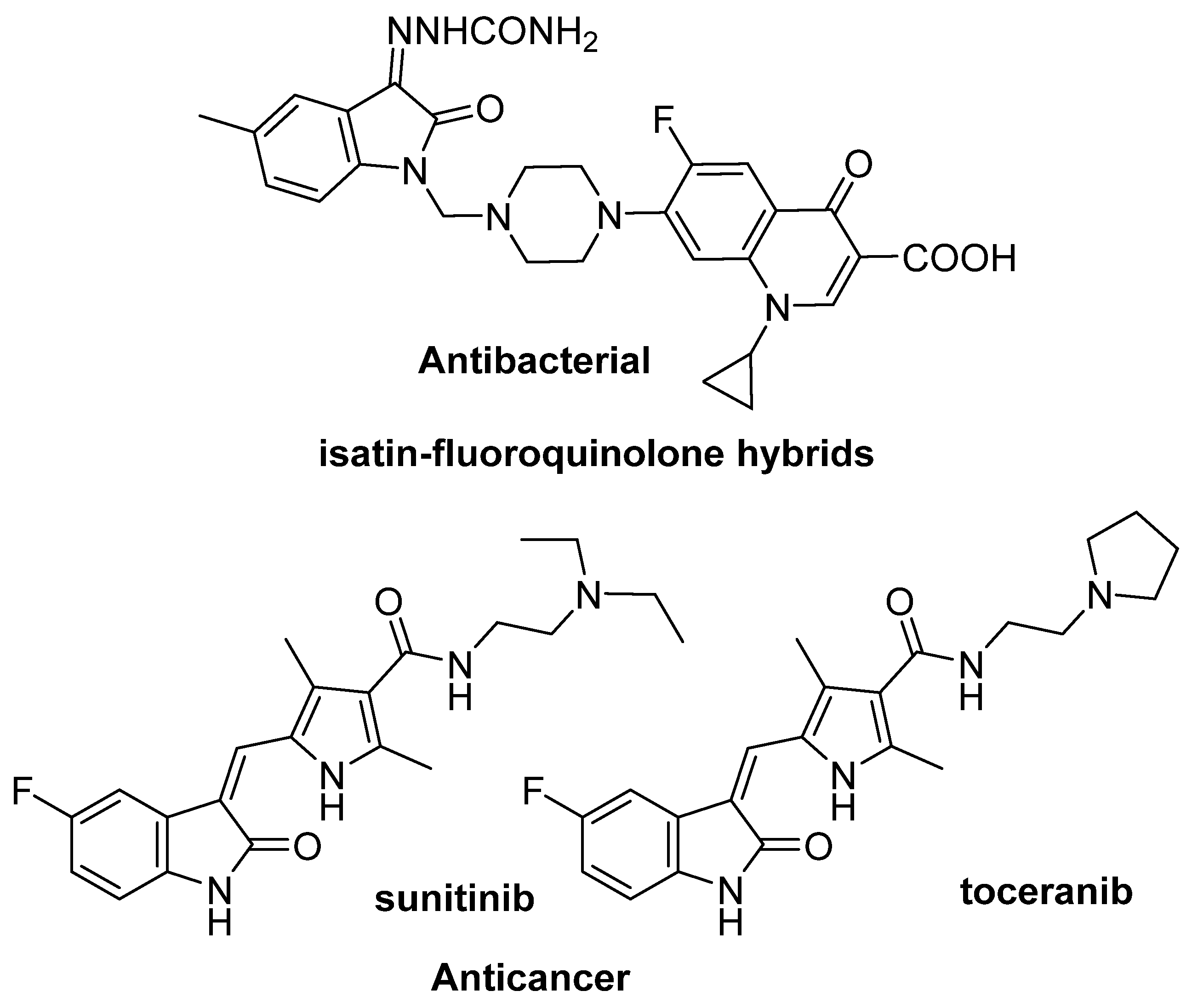
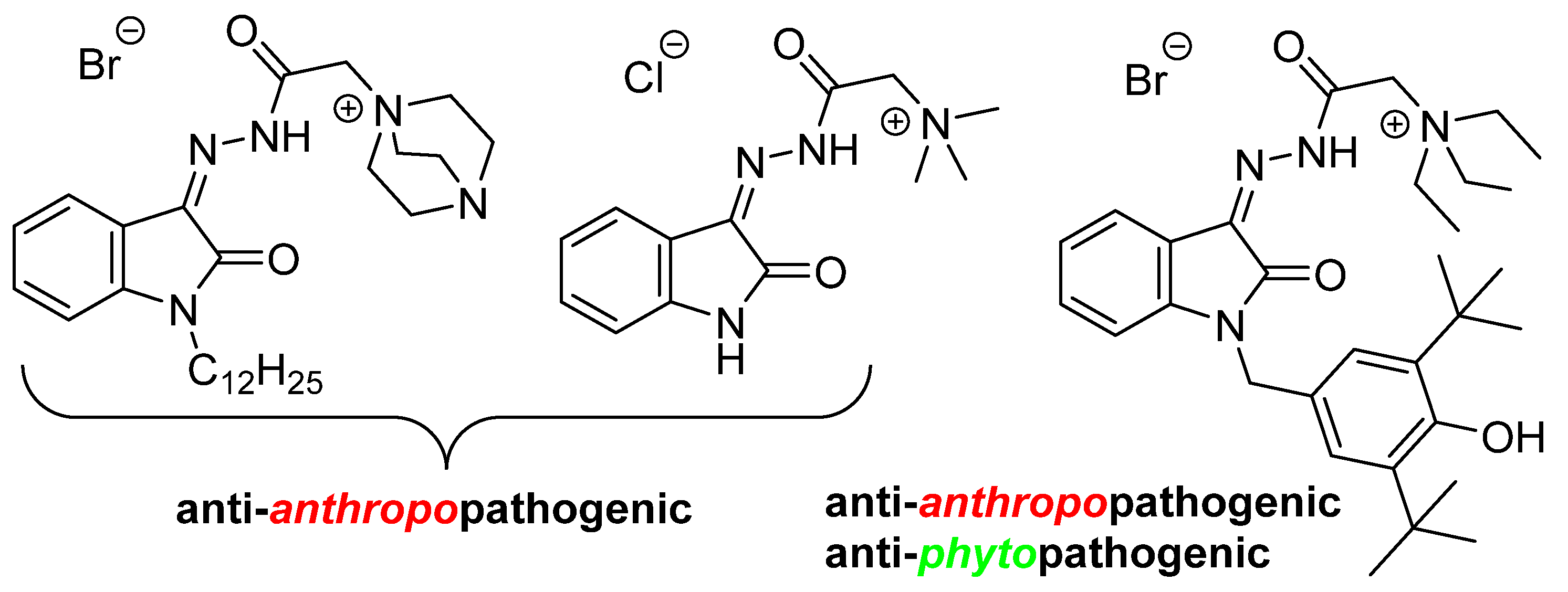




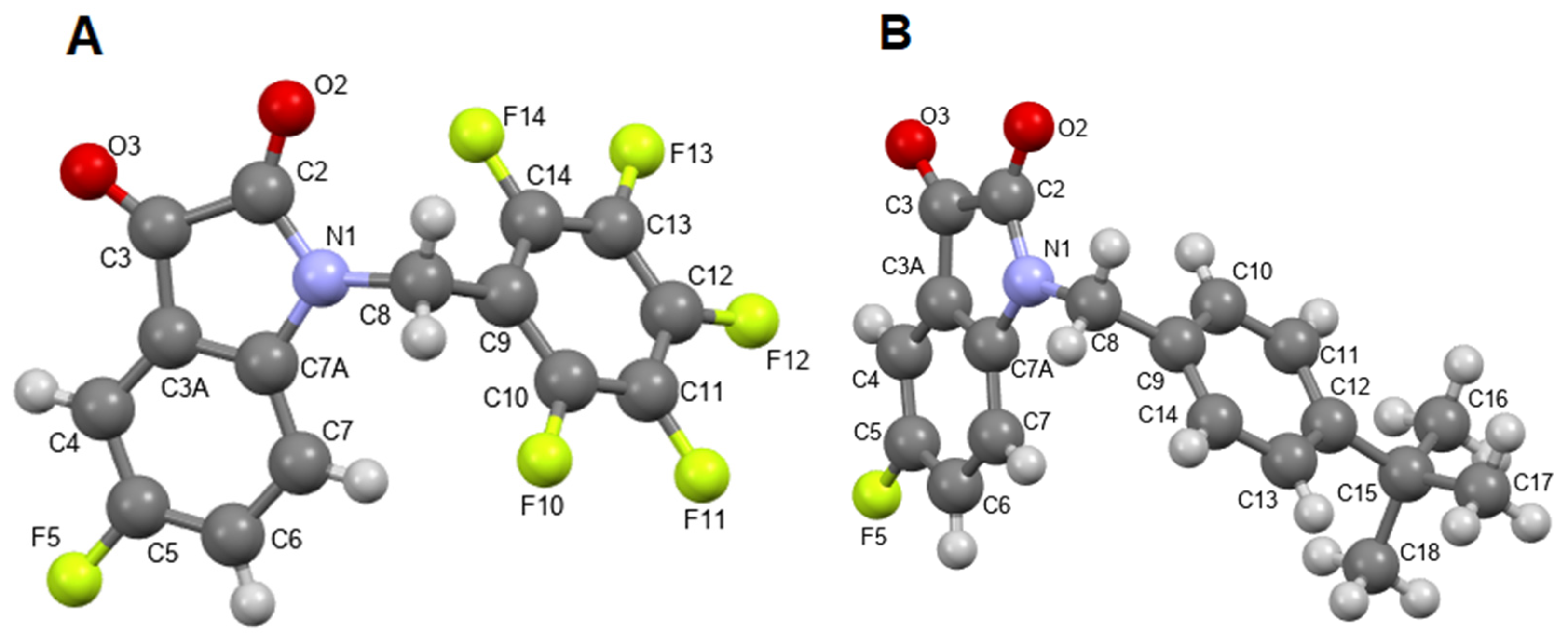
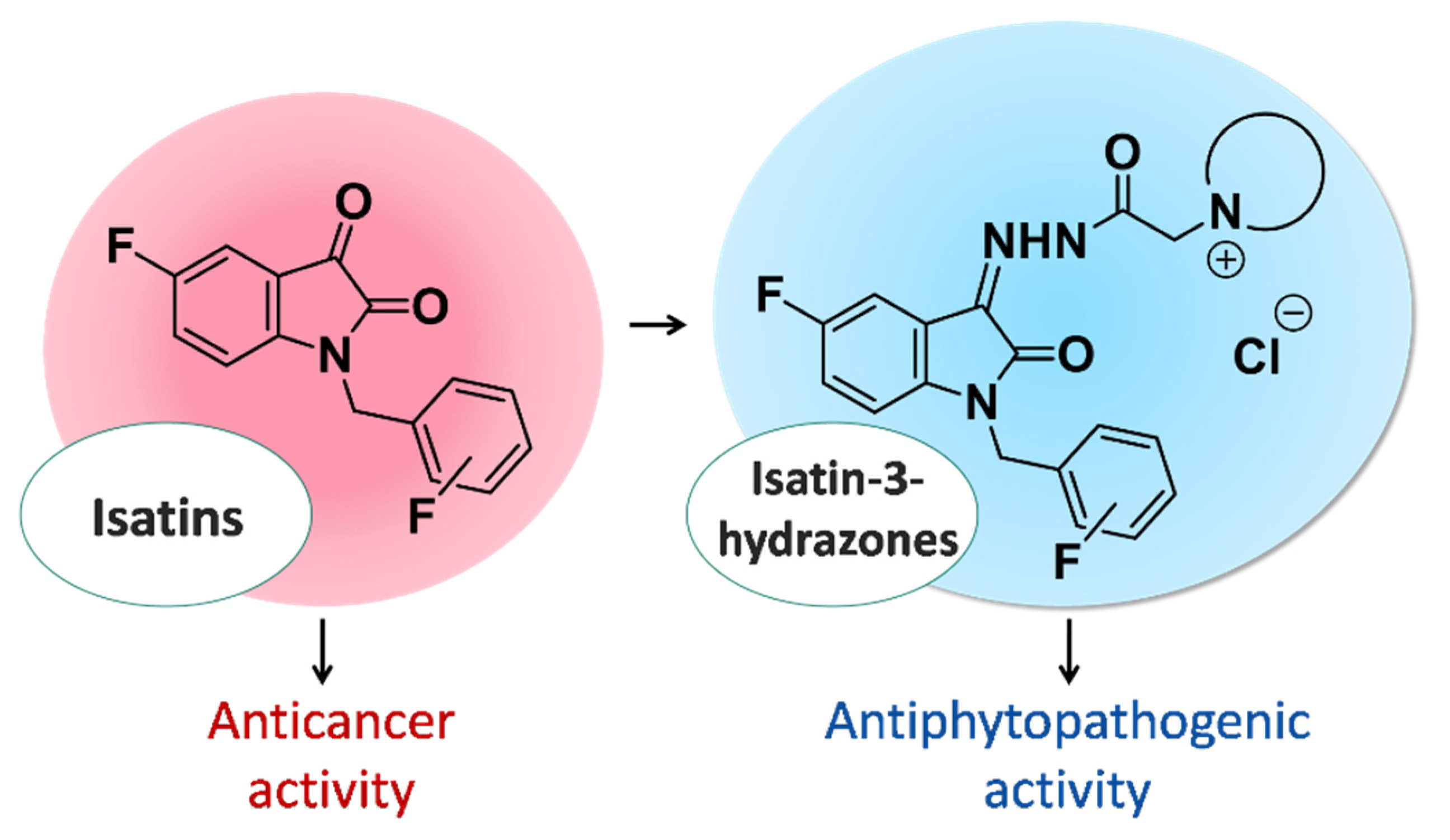
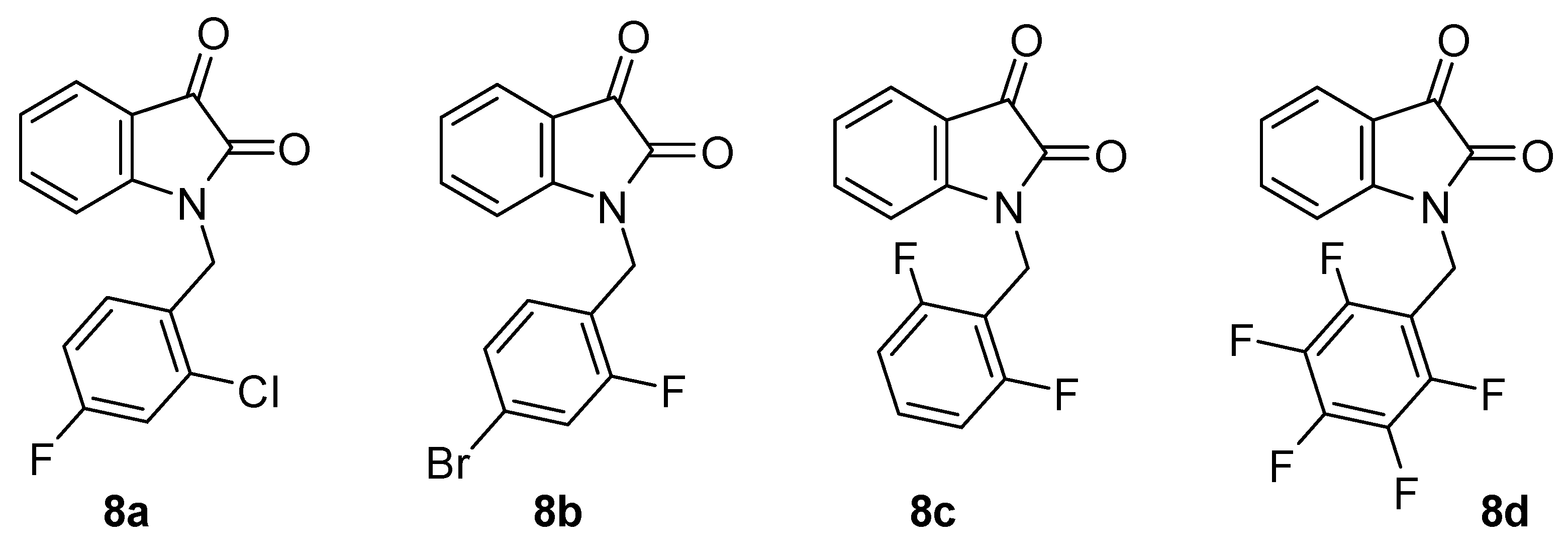
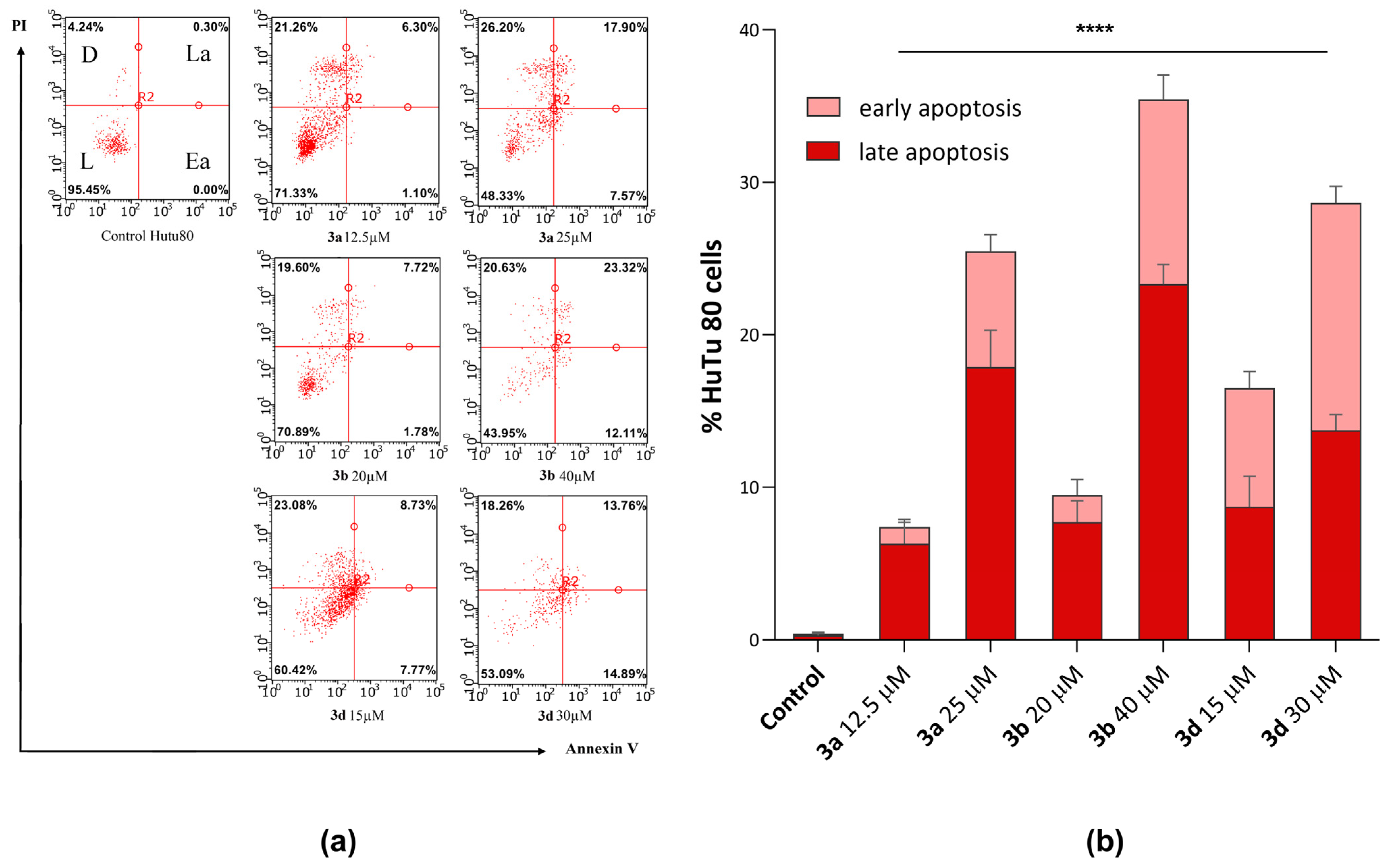
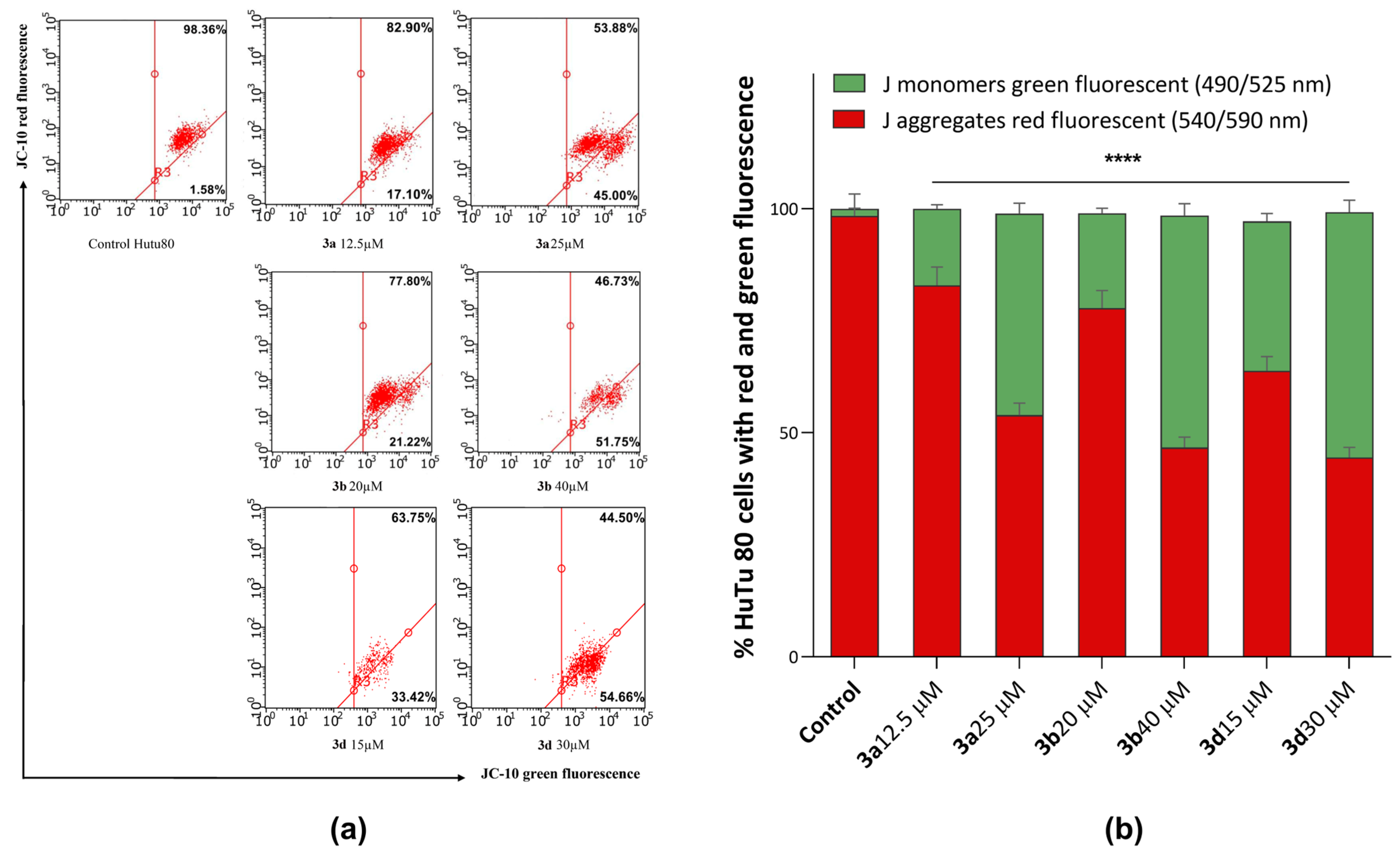
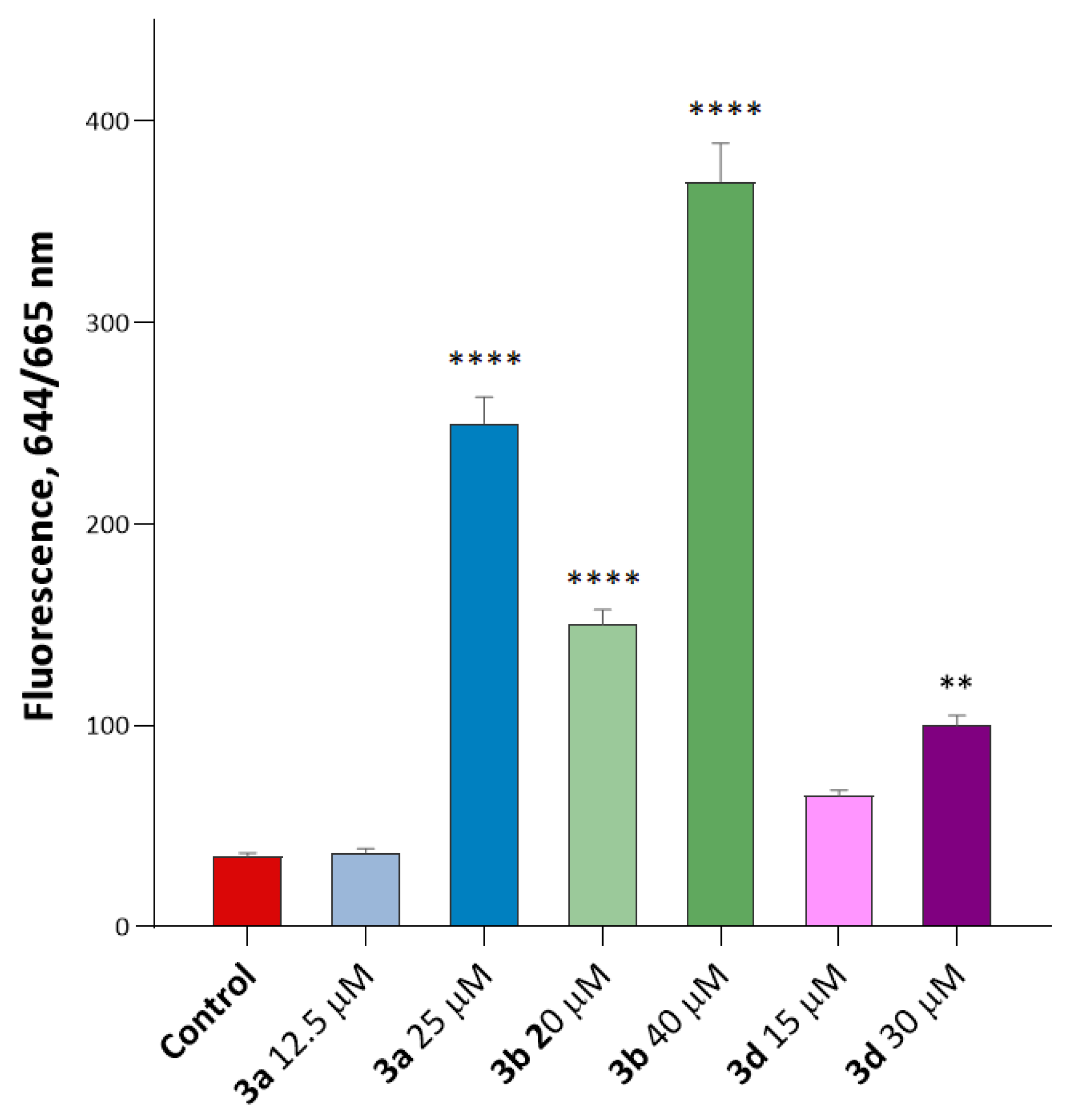


| Compounds | IC50 (µM) | |||
|---|---|---|---|---|
| Cell Line | ||||
| a M-HeLa | b HuTu 80 | c Chang Liver | d WI38 | |
| 3a | 74.6 ± 5.9 | 25.2 ± 1.9 (SI~2.5) WI38 | 53.0 ± 4.2 | 62.0 ± 2.0 |
| 3b | 32.1 ± 2.5 (SI–1.8) WI38 | 38.3 ± 3.0 (SI~1.5) WI38 | 71.5 ± 5.6 | 58.1 ± 6.6 |
| 3c | 65.7 ± 5.9 | 41.2 ± 2.7 | 95.5 ± 8.0 | nd |
| 3d | 53.8 ± 4.3 (SI–1.5) WI38 | 31.0 ± 2.4 (SI–2.5) WI38 | >100 | 78.3 ± 8.0 |
| 3f | 100 ± 7.4 | 92.0 ± 6.4 | >100 | nd |
| 4a | 44.7 ± 3.3 | 44.0 ± 2.9 | 80.0 ± 5.8 | nd |
| 4b | 58.8 ± 4.4 | 50.0 ± 3.8 | 63.2 ± 5.5 | nd |
| 4c | >100 | 43.0 ± 3.0 | 92.1 ± 7.4 | nd |
| 4d | 58.4 ± 4.1 | 33.3 ± 2.3 | 39.4 ± 2.8 | nd |
| 4e | 94.0 ± 7.5 | 53.2 ± 3.9 | >100 | nd |
| 6a | 98.0 ± 6.8 | 100 ± 8.4 | 76.1 ± 5.3 | nd |
| 6b | 44.4 ± 3.2 | 37.6 ± 2.6 | 76.0 ± 5.4 | nd |
| 6c | 83.0 ± 5.7 | 59.4 ± 4.2 | >100 | nd |
| 8a | 50.0 ± 3.7 | 64.0 ± 4.5 | >100 | nd |
| 8b | 40.0 ± 2.8 | 59.4 ± 4.2 | 100 ± 8.4 | nd |
| 8c | 98.8 ± 6.9 | 50.3 ± 3.6 | 79.0 ± 5.5 | nd |
| 8d | >100 | 54.1 ± 3.9 | >100 | nd |
| 5-FU | 62.0 ± 4.9 | 65.2 ± 5.6 | 19.0 ± 1.7 | 62.0 ± 4.2 |
| Compounds | Latent Period, % of Control | Maximum Amplitude (MA), % of Control | Aggregation Rate, % of Control | Time to MA, % of Control | APTT $, % of Control |
|---|---|---|---|---|---|
| 3a | +12.3 (11.7–14.5) *,†,# | −11.8 (9.4–14.3) *,† | −12.7 (10.8–15.7) *,† | −8.7 (7.6–10.8) *,†,# | +11.2 (9.5–13.7) * |
| 3b | +10.3 (7.3–11.8) *,†,# | −15.3 (13.9–17.2) *,† | −16.8 (14.6–19.1) *,†,# | +9.3 (8.7–11.4) *,† | +8.3 (6.4–9.1) * |
| 3d | +2.4 (1.3–2.7) †,# | −8.2 (6.1–10.5) *,†,# | −15.7 (11.9–17.6) *,† | +17.5 (16.4–18.7) *,† | +6.2 (4.7–10.3) * |
| Acetylsalicylic acid | −2.1 (1.1–2.6) † | −13.7 (10.8–16.4) *,† | −10.5 (7.6–12.3) *,† | +10.5 (8.7–13.4) *,† | - |
| Heparin sodium | - | - | - | - | +20.3 (19.7–21.4) * |
| Compound | EC50, µg/mL * at Day 5 | |
|---|---|---|
| F. oxysporum | P. cactorum | |
| 5a | 13.84 | 15.12 |
| 5b | 14.84 | 18.19 |
| 5c | 14.92 | 15.40 |
| 5d | 17.35 | 24.74 |
| 5e | 0.60 | 27.43 |
| 7a | 7.25 | 22.87 |
| 7b | 20.24 | 27.51 |
| 7c | 13.90 | 19.98 |
| Fludioxonil | 83.33 | 29.51 |
| N-cetylpyridinium chloride | 141.1 | 34.79 |
Disclaimer/Publisher’s Note: The statements, opinions and data contained in all publications are solely those of the individual author(s) and contributor(s) and not of MDPI and/or the editor(s). MDPI and/or the editor(s) disclaim responsibility for any injury to people or property resulting from any ideas, methods, instructions or products referred to in the content. |
© 2023 by the authors. Licensee MDPI, Basel, Switzerland. This article is an open access article distributed under the terms and conditions of the Creative Commons Attribution (CC BY) license (https://creativecommons.org/licenses/by/4.0/).
Share and Cite
Bogdanov, A.V.; Neganova, M.; Voloshina, A.; Lyubina, A.; Amerhanova, S.; Litvinov, I.A.; Tsivileva, O.; Akylbekov, N.; Zhapparbergenov, R.; Valiullina, Z.; et al. Anticancer and Antiphytopathogenic Activity of Fluorinated Isatins and Their Water-Soluble Hydrazone Derivatives. Int. J. Mol. Sci. 2023, 24, 15119. https://doi.org/10.3390/ijms242015119
Bogdanov AV, Neganova M, Voloshina A, Lyubina A, Amerhanova S, Litvinov IA, Tsivileva O, Akylbekov N, Zhapparbergenov R, Valiullina Z, et al. Anticancer and Antiphytopathogenic Activity of Fluorinated Isatins and Their Water-Soluble Hydrazone Derivatives. International Journal of Molecular Sciences. 2023; 24(20):15119. https://doi.org/10.3390/ijms242015119
Chicago/Turabian StyleBogdanov, Andrei V., Margarita Neganova, Alexandra Voloshina, Anna Lyubina, Syumbelya Amerhanova, Igor A. Litvinov, Olga Tsivileva, Nurgali Akylbekov, Rakhmetulla Zhapparbergenov, Zulfiia Valiullina, and et al. 2023. "Anticancer and Antiphytopathogenic Activity of Fluorinated Isatins and Their Water-Soluble Hydrazone Derivatives" International Journal of Molecular Sciences 24, no. 20: 15119. https://doi.org/10.3390/ijms242015119
APA StyleBogdanov, A. V., Neganova, M., Voloshina, A., Lyubina, A., Amerhanova, S., Litvinov, I. A., Tsivileva, O., Akylbekov, N., Zhapparbergenov, R., Valiullina, Z., Samorodov, A. V., & Alabugin, I. (2023). Anticancer and Antiphytopathogenic Activity of Fluorinated Isatins and Their Water-Soluble Hydrazone Derivatives. International Journal of Molecular Sciences, 24(20), 15119. https://doi.org/10.3390/ijms242015119











